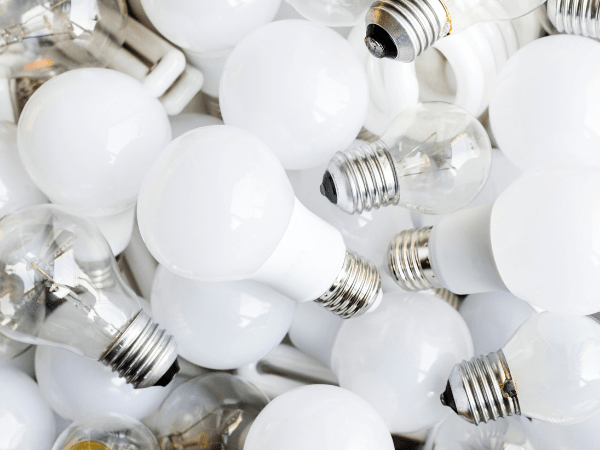Just In
- 3 hrs ago

- 4 hrs ago

- 8 hrs ago

- 9 hrs ago

Don't Miss
- Movies
 Did You Know Taarak Mehta Ka Ooltah Chashmah Actor Kanwalpreet Singh Owns Expensive Kite Worth Over Rs 3 Lakh?
Did You Know Taarak Mehta Ka Ooltah Chashmah Actor Kanwalpreet Singh Owns Expensive Kite Worth Over Rs 3 Lakh? - Finance
 Penny Stock Bags Back-To-Back Orders Worth Rs 500 Mn, 110 Mn; Shares Hit Upper Circuit
Penny Stock Bags Back-To-Back Orders Worth Rs 500 Mn, 110 Mn; Shares Hit Upper Circuit - Sports
 Pakistan vs New Zealand: Mohammad Rizwan Absent from Team's Training Session Ahead of 4th T20I
Pakistan vs New Zealand: Mohammad Rizwan Absent from Team's Training Session Ahead of 4th T20I - News
 Centre Seeks Modification Of 2012 2G Spectrum Verdict In Supreme Court
Centre Seeks Modification Of 2012 2G Spectrum Verdict In Supreme Court - Education
 Meet Naima Khatoon, First Vice Chancellor of AMU, Know Her Background and Education Qualification
Meet Naima Khatoon, First Vice Chancellor of AMU, Know Her Background and Education Qualification - Technology
 Xiaomi Robot Vacuum Cleaner S10, Handheld Garment Steamer, and Redmi Buds 5A Launched in India
Xiaomi Robot Vacuum Cleaner S10, Handheld Garment Steamer, and Redmi Buds 5A Launched in India - Automobiles
 Nissan Magnite Achieves 1 Lakh Unit Sales Milestone: Consistency Helps
Nissan Magnite Achieves 1 Lakh Unit Sales Milestone: Consistency Helps - Travel
Kurnool's Hidden Gems: A Guide To Exploring India's Lesser-Known Treasures
Is Fluorescent Light Bad For You? Here's What You Should Know
Can fluorescent lights affect your health? A 2009 study done by Canada's Trent University found that UV radiation from fluorescent lights may cause eye strain, migraines and dizziness in people. The effects are lessened by placing the fluorescent lights at least 1 to 2 ft away.
Fluorescent lights, especially CFLs (compact fluorescent lights) are commonly seen in offices, and homes. CFLs give out an efficient source of energy, according to the Thurston County, Washington Department of Public Health and Social Services. These fluorescent light bulb lasts up to ten times longer than other types of lighting and uses just one-fourth of the energy burned by incandescent bulbs.

However, this form of lighting can lead to both positive and negative health effects. And many people find this harsh light distracting because they are sensitive to this kind of light and working under the light for long hours might actually put stress on their bodies and lead to health problems like sleep-pattern disruption, cancer, and migraine headaches.
The study 'Potential Biological and Ecological Effects of Flickering Artificial Light' have explored the effects of fluorescent light sensitivity in the journal PLOS ONE.
What Causes Fluorescent Light Sensitivity?
Light sensitivity is termed as the intolerance to light which causes discomfort, along with the need to close or squint your eyes. Light sensitivity can also bring headaches because of their brightness.

Symptoms Of Fluorescent Light Sensitivity
Physical and emotional symptoms develop as a result of your sensitivity to fluorescent light. The following symptoms may develop after a few minutes of exposure or there may be a delay in the onset of these symptoms.
1.
Eye
strain
2.
Intolerance
of
fluorescents
3.
Eye
inflammation
or
pain
4.
Difficulty
in
reading
and
focusing
5.
Blurred
or
impaired
vision
6.
Headache
or
migraine
attacks
7.
Light-headedness
8.
Dizziness
9.
Nausea
10.
Shortness
of
breath
11.
Lethargy
12.
Anxiety
13.
Feelings
of
depression
14.
Disrupted
sleep
Health Effects Of Fluorescent Lights

1. Eye problems
Fluorescent lights cause eye problems and the symptoms are eye strain, inflammation and excessive squinting. Some medical professionals have also theorized that retinal damage, myopia or astigmatism can also be due to the brightness of fluorescent lights. If a person has an eye disorder, fluorescent lights arouse the central nervous system and this can lead to visual stress and eye discomfort.

2. Headaches and migraine
Do fluorescent lights give you headaches? The answer is yes, and it's even more likely to occur if you already have a headache disorder such as a migraine or a cluster headache. Most people who suffer from migraine attacks are triggered by fluorescents. Workers in offices who work under the CFLs are twice more likely to get headaches compared to natural lighting environments.

3. Disrupts sleep pattern
The spectrum frequencies of light from the CFLs hit the retina and pass through the circadian pathways, instead of the visual cortex. This disrupts the physiological processes in the brain and restricts the production of melatonin, the hormone that promotes sleep and wakefulness in the body. The blue light emitted from a CFL disrupts the body's circadian rhythm.
Some properties of the fluorescent lights can affect an individual's tolerance levels which include:
- High amount of blue light emitted from CFL is known to increase eye strain, headaches and migraines.
- Low-frequency flicker is absorbed easily by the brain even though it isn't visible to the naked eye.
- Overall brightness can trigger light-sensitive conditions.

Tips For Managing Fluorescent Light Sensitivity
1. Treat your pre-existing condition. For example, if you are dealing with conditions like migraines or eye disorders.
2. Talk to your employer about how the light affects your health and how it may affect your work productivity as well.
3. To minimize the effects of CFLs, use tinted glasses.
4. Expose to natural light as much as possible which is a much better alternative to fluorescent lighting. You could also choose warm-coloured interior lighting.
Share this article!
-
 healthWhat Your Tongue Reveals About Your Health: Wellness And Warning Signs You Need To Know
healthWhat Your Tongue Reveals About Your Health: Wellness And Warning Signs You Need To Know -
 healthHow Can You Protect Yourself From Extreme Heat? Dos And Don’ts To Follow
healthHow Can You Protect Yourself From Extreme Heat? Dos And Don’ts To Follow -
 healthRussian Influencer Starves His Newborn To Death With Sunlight Diet, Know Dos And Don’ts Of This Diet
healthRussian Influencer Starves His Newborn To Death With Sunlight Diet, Know Dos And Don’ts Of This Diet -
 healthExclusive: Expert Shares Impact of Heat Waves on Infectious Disease Transmission
healthExclusive: Expert Shares Impact of Heat Waves on Infectious Disease Transmission -
 healthExclusive: Doctor Shares Why Women Should Prioritize Health, Key Resolutions For Well-being And Vitality
healthExclusive: Doctor Shares Why Women Should Prioritize Health, Key Resolutions For Well-being And Vitality -
 healthEverything You Need To Know About Deadly H5N1 Virus That Can Be 100 Times Worse That COVID-19 Pandemic
healthEverything You Need To Know About Deadly H5N1 Virus That Can Be 100 Times Worse That COVID-19 Pandemic -
 astrologyWorld Health Day 2024: Holistic Health Tips For 12 Zodiac Signs As Per Astrology
astrologyWorld Health Day 2024: Holistic Health Tips For 12 Zodiac Signs As Per Astrology -
 healthInstagram Claims Grapes Are Contaminated With Pesticides, Methods To Clean It Properly Before Consuming Them
healthInstagram Claims Grapes Are Contaminated With Pesticides, Methods To Clean It Properly Before Consuming Them -
 healthDutch Woman Opts For Euthanasia In May Not Due To Physical Illness, Know How To Build Mental Resiliance
healthDutch Woman Opts For Euthanasia In May Not Due To Physical Illness, Know How To Build Mental Resiliance -
 health20-Year-Old Man In China Suffers From Delusional Love Disorder, Know What Is Erotomania And Its Signs
health20-Year-Old Man In China Suffers From Delusional Love Disorder, Know What Is Erotomania And Its Signs -
 healthExclusive: On World Autism Day 2024, Let Us Empower Parents With Positive Strategies For Autism Care
healthExclusive: On World Autism Day 2024, Let Us Empower Parents With Positive Strategies For Autism Care -
 health10 Year Old Girl Dies After Eating Cake, How To Identify A Bad Cake Online, What Health Risks It Can Pose
health10 Year Old Girl Dies After Eating Cake, How To Identify A Bad Cake Online, What Health Risks It Can Pose


 Click it and Unblock the Notifications
Click it and Unblock the Notifications



